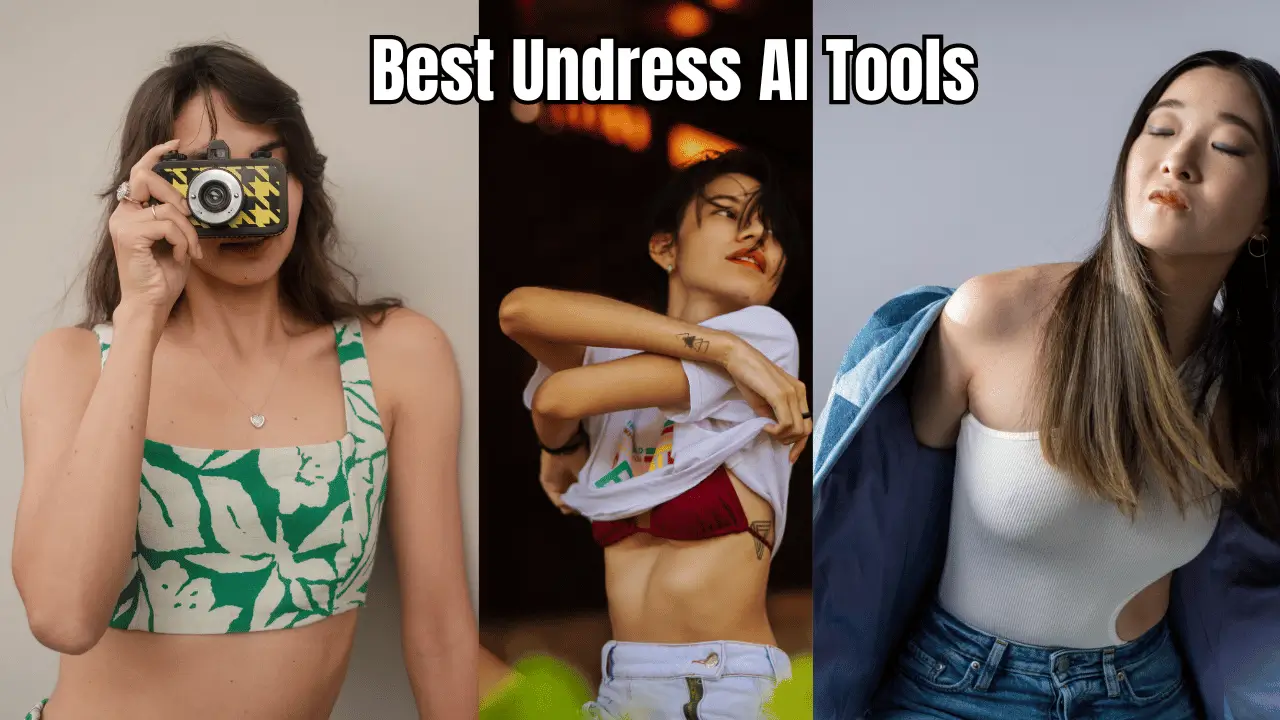In an era dominated by digital manipulation, have you ever pondered the potential of artificial intelligence to reshape our perception of reality? The emergence of "undress AI" technology signifies a paradigm shift in image alteration, offering unprecedented capabilities to modify visual content.
The realm of image modification has witnessed a remarkable transformation, primarily propelled by advancements in artificial intelligence. Tools, once confined to the domain of professional image editors, are now accessible to a broader audience, empowering users to alter visual content with relative ease. A prominent example of this evolution is the rise of "undress AI" applications, designed to digitally remove clothing from images. These applications utilize intricate algorithms to identify and isolate clothing areas, enabling precise removal and replacement. The primary goal of these technologies is to create the illusion of unclothed individuals within photographs.
This technology presents a unique blend of accessibility and sophistication. While some competitors impose complex registration procedures or limit trial periods, many undress AI platforms emphasize accessibility and transparency. These platforms often provide free versions, allowing users to explore the capabilities of the technology without financial commitment. Moreover, advanced algorithms ensure that the generated images align with the original's lighting, shading, and artistic style, preserving the authenticity of the visual content. The ability to experiment with different styles and appearances has broadened the appeal of these applications, extending beyond simple image alteration to encompass creative expression.
The versatility of these tools has also made them applicable in a variety of scenarios, from artistic exploration to fashion design. Artists and creatives can utilize these tools to push the boundaries of digital art, explore new dimensions of realism, and create compelling visuals. The fashion industry can utilize these technologies to visualize new styles, experiment with different looks, and provide potential customers with a preview of what they could look like in specific garments. This flexibility is particularly noteworthy, highlighting the adaptability of this technology across diverse professional fields.
The evolution of these tools mirrors the broader progression of artificial intelligence. Deep learning models, trained on vast datasets, are capable of identifying patterns and replicating nuanced elements of human anatomy and clothing textures. This allows for a more realistic and convincing output, ensuring that the altered images are visually consistent with the source material. The sophistication of these algorithms is also reflected in their ability to adjust to various lighting conditions, body types, and photographic styles, thus enhancing the user experience.
However, the widespread availability of "undress AI" tools raises pertinent ethical concerns. The potential for misuse, including the creation of non-consensual images or the spread of misinformation, is a significant concern. The technology's power to alter and manipulate images necessitates careful consideration of its implications and the establishment of safeguards to prevent abuse. While the intention of many platforms is to offer creative tools, the potential for harmful applications is unavoidable. As a result, the ongoing discussion around regulation, responsible usage, and the ethical implications of AI-driven image manipulation is essential.
The proliferation of "undress AI" also challenges established notions of privacy and image authenticity. With the capacity to transform any image, the distinction between reality and fabrication becomes increasingly blurred. Consequently, digital literacy and critical thinking are essential skills for navigating the current digital landscape. Individuals should be well-informed about the tools and techniques used to manipulate images, enabling them to assess the veracity of visual content with discernment.
As the technology evolves, the importance of regulation and responsible implementation will only increase. This includes establishing clear guidelines for image modification, ensuring that platforms comply with ethical standards, and offering users tools to detect and identify manipulated content. Ultimately, the responsible and ethical development and use of "undress AI" technology necessitate a collective effort involving developers, policymakers, and the public, promoting innovation while safeguarding individual rights and well-being.
The appeal of "undress AI" also lies in its potential for creativity. Users can experiment with different styles, try out new looks, and explore various artistic visions. Free versions of these apps often provide ample opportunity for users to unleash their creativity, fostering a sense of artistic exploration and self-expression. Platforms like Undress AI, Unclothy, and others are offering various functionalities, allowing users to test out different styles and appearances in a seamless way.
Moreover, the rapid advancement of AI in this domain is undeniable. New applications are constantly emerging, offering enhanced features, improved accuracy, and increased user-friendliness. From the initial attempts at image manipulation to the sophisticated algorithms of today, the rate of innovation is truly remarkable. These advancements are driven by an active ecosystem of developers, researchers, and enthusiasts who are continuously pushing the boundaries of what is possible.
The compatibility of "undress AI" tools extends across various platforms and devices. Most applications are designed to run on both iOS and Android devices, offering a seamless experience across a range of smartphones and tablets. The app is optimized for performance on various screen sizes and resolutions, guaranteeing a consistent and reliable user experience regardless of the device used.
Many platforms are working towards a safe and reliable ecosystem. Undresser AI, for instance, is presented as a secure, fast, and efficient solution for exploring free undress AI capabilities. The commitment to creating a trustworthy environment is crucial for gaining public trust and ensuring the long-term viability of the technology. As AI technology evolves, the potential for innovation remains vast, as does the importance of developing these tools responsibly.
The availability of free AI clothes remover websites reflects the growing popularity of this technology. Users can easily and quickly remove clothes from photos online, contributing to the overall adoption of these tools. The accessibility of these websites further contributes to their increasing popularity.
Several companies are offering free undress AI tools to remove clothes with AI. These tools typically use advanced algorithms to detect and remove clothing automatically, generating visually altered images. For instance, platforms like DeepNude CC and others allow users to upload images and manipulate them with AI-driven technology. These tools often offer options for artistic exploration, allowing users to reimagine celebrities and create unique visuals.
The ease with which these tools can be used also contributes to their appeal. Users can often remove clothing from images with a single click. This ease of use, combined with the advanced processing capabilities, makes these platforms attractive to both casual users and professional creatives. The ability to remove clothes and items in pictures in creative ways further enhances the user experience.
Some platforms like Cloth Off are free undress AI apps designed to transform photos with advanced AI technology. Users can select the type of undress, upload an image, and use a brush to paint the area they want to alter, then click the undress option. The tool then generates a realistic AI nude version of that image. These platforms often include additional features, such as animeify and faceswap, broadening their creative potential.
The trend of undress AI or AI-powered image manipulation is rapidly evolving, and its implications are far-reaching. As the technology becomes more sophisticated and widely available, both the opportunities and challenges it presents will continue to grow. It is essential that users approach these tools with awareness and use them in an ethical and responsible manner. The future of AI-driven image modification depends on the collaborative efforts of developers, policymakers, and the general public to ensure that it serves as a tool for creativity, innovation, and ethical practices.
| Feature | Details |
|---|---|
| Technology Used | Artificial Intelligence (AI), Deep Learning Models |
| Primary Function | Digitally remove clothing from images; create the illusion of unclothed individuals. |
| Key Features |
|
| Accessibility | Available as apps, online tools, and platforms. Many offer free versions. |
| Operating Systems | Compatible with iOS and Android devices. |
| Target User Groups | Artists, creatives, fashion designers, users interested in creative expression. |
| Ethical Concerns | Potential for misuse, including non-consensual image creation, spread of misinformation, and privacy violations. |
| Legal & Safety Considerations | Requires clear guidelines, platform compliance with ethical standards, tools to detect manipulated content, and responsible use by users. |
| Impact on the Digital World |
|
| Relevant Websites/Resources | Example Platform (For example and not real) |


